Python is a non-venomous snake native to Africa, Asia and Australia. There are 26 species in 8 genera known. Its Latin name comes from the giant python in Greek mythology. Pythons are also kept as pets in many countries around the world. Although pythons' teeth are not venomous, they are dangerous to humans due to their large size and ability to swallow medium to large animals (such as pigs or sheep). Under normal circumstances, if you lack relevant experience, you are generally not allowed to keep it. The following will introduce you to the ranking of the world's famous pythons, so that everyone can understand the common python species.
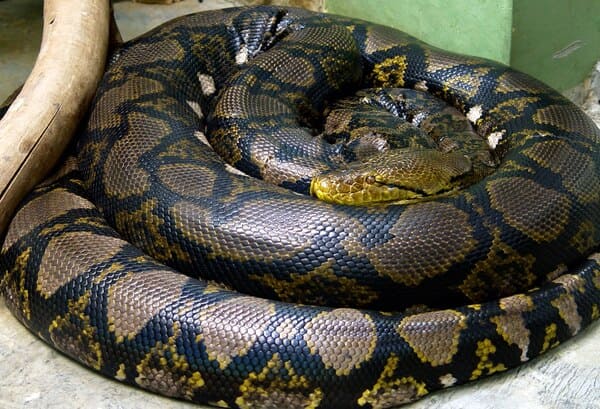
1. Reticulated python
The reticulated python is named after its eyes that extend to the corners of its mouth, its back is grey-brown or yellowish-brown, and it has complex diamond-shaped black-brown and yellow or light gray reticulated markings. Also known as rex python and reticulated python, it is a non-venomous large python belonging to the order Squamata, suborder Snakes and genus Anaconda. The snake is considered to be the second largest snake in the world after the Amazon anaconda. It is usually about 8-9 meters in length and can reach up to 12 meters in length. It has a slender body, a very powerful entanglement force, and is also highly aggressive. It is a feared predator in the tropical rainforests of Southeast Asia.
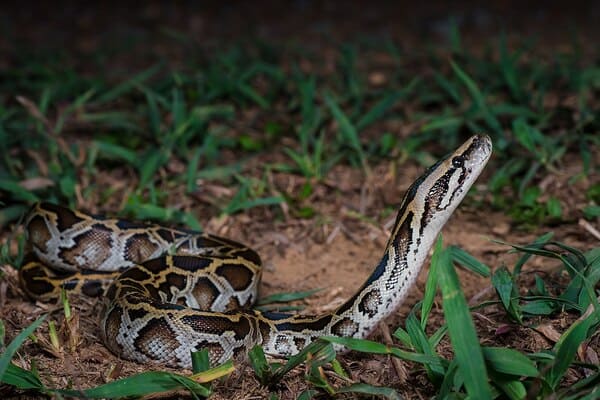
2. Burmese python
The Burmese python (scientific name: Python bivittatus), also known as the Burmese rock python, southern snake, harp snake or double-banded anaconda, is one of the subspecies of the Asian rock python of the genus Python in the family Pythonidae. The Burmese python is one of the six largest snake species in the world and is known as the second largest snake in Asia. According to the "Guinness Book of World Records", the longest Burmese python once reached 9.75 meters, but most individuals are less than five meters and weigh up to 91 kilograms. The Burmese python is a native species in Southeast Asia and mainly inhabits tropical rain forests. They are often found near water sources and sometimes in trees.
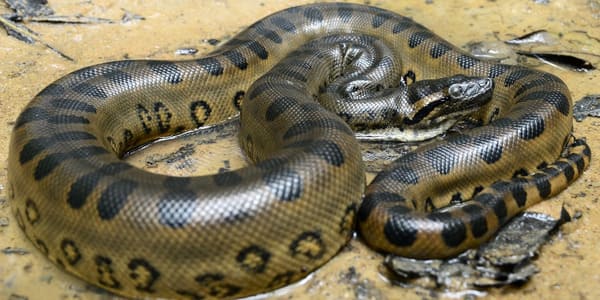
3. Anaconda
Anaconda usually refers to anaconda, also known as green anaconda or green water anaconda, which is the largest known snake species. The body length of an adult water anaconda is generally between 5 and 10 meters, and its weight can reach 220 kilograms. They are accustomed to inhabiting rivers and can lurk in the water for long periods of time, sometimes only exposing their heads to breathe on the water. Anacondas mainly prey on terrestrial animals, such as mammals and birds. In some areas, anacondas even prey on alligators. Anacondas are ovoviviparous animals. In addition, they also undergo aestivation, which may be related to the dryness of the waters where they live. Anacondas are sometimes buried in mud to reduce evaporation of water from their bodies.

4. Ball python
Ball pythons are called different names in different countries. In Europe, locals call it the "Emperor Python," while in the United States it is known as the "Ball Python." The name comes from the way ball pythons roll their bodies into a compact ball when they are nervous or feeling threatened, hiding their heads in the center of their bodies. Similar to other pythons, ball pythons have a gentle temperament, medium body size and beautiful patterned appearance. This snake is docile and timid, making it a common choice for pet pythons. Ball pythons are non-venomous snakes that live in grasslands, forests and farmland and feed on small mammals.
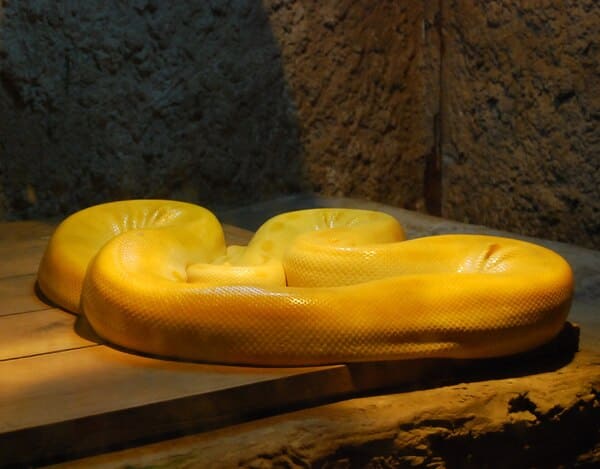
5. Golden Python
The golden python is an animal of the genus Golden Python in the family Phylum Chordata, family Anacondae, and is a national first-level protected animal. It is an albino mutant of the Burmese python and a very rare mutant species. The golden python is non-venomous, its body is golden yellow with white irregular lines, and its adult body length can reach about 7 meters. In the wild, if given the opportunity to mate with another golden python, its unique genes will be passed on to the next generation. However, the chance of this happening is very small, so the golden python is very rare. It is mainly found in India, Sri Lanka, Myanmar and northern Thailand.

6. Blood Python
The blood python (scientific name: Python curtus) is a non-venomous snake in the genus Python of the family Python. It is mainly distributed in Southeast Asia and currently has three subspecies. This kind of python is considered a small to medium sized python, generally no more than two meters in length. Due to their different origins, different species of blood pythons have some differences in body patterns and colors. For example, blood pythons from Borneo are mainly black in color, while blood pythons from the Malay Peninsula are mainly reddish brown. Most of the blood pythons in their origin are used as raw materials for making leather goods. At the same time, due to the development of the pet market, some special individuals are selected and raised as pets.
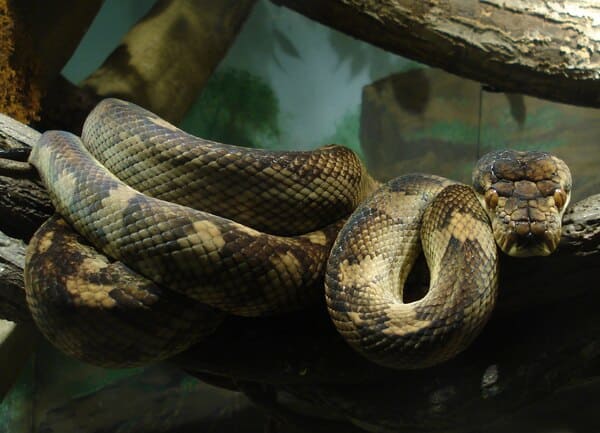
7. Amethyst Python
The amethyst python is Australia's largest snake and is known for hunting large mammals such as kangaroos. It looks like a huge carpet python. Its body length is generally between 3.5 and 5 meters, and the longest can be 8.5 meters. The snake mainly inhabits shady places in tropical rainforests, shrubs and exposed rocks. Its prey includes bats, possums, rats, wallabies, kangaroos, freshwater crocodiles and some birds. When hunting, amethyst pythons suffocate their prey by wrapping and constricting it. It is mainly found in the North Queensland region of Australia. Although amethyst pythons are not venomous, they can pose a threat to small children due to their large size.
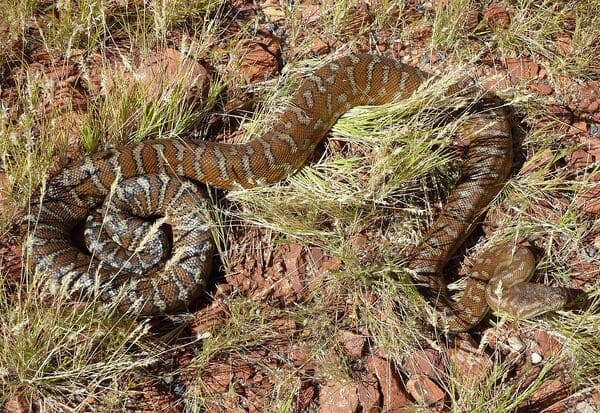
8. Carpet python
Carpet pythons are named for their unique patterns that resemble carpets. It is one of the most common species in the genus Morelia and is found in Australia, New Guinea and some Indonesian islands. This snake is divided into 6 subspecies. The total length of carpet pythons ranges from 120 to 250 centimeters, with the longest recorded length being 4 meters. Its body color varies depending on the geographical environment, but usually has a yellow or light brown background with large dark brown markings. Except for the mouth, its scales are small, and heat sensors are distributed in the rostrum scales, in front of the upper lip scales, and behind the lower lip scales.
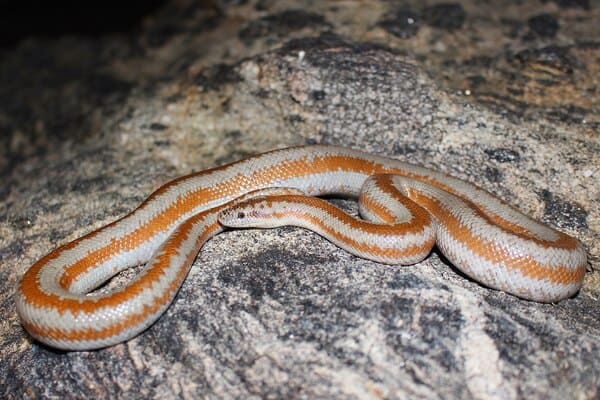
9. Mexican Rose Red Python
The Mexican rose boa is a python with a thick body, a narrow head, and a blunt tail. Its body is light gray and yellowish in color and covered with broad dark brown stripes extending from its head to its tail. These stripes may be very clear or rough. The Mexican rose boa is mainly distributed in northwest Mexico. It is good at climbing and is common in shrubs and semi-desert areas. It feeds on small birds and mammals.
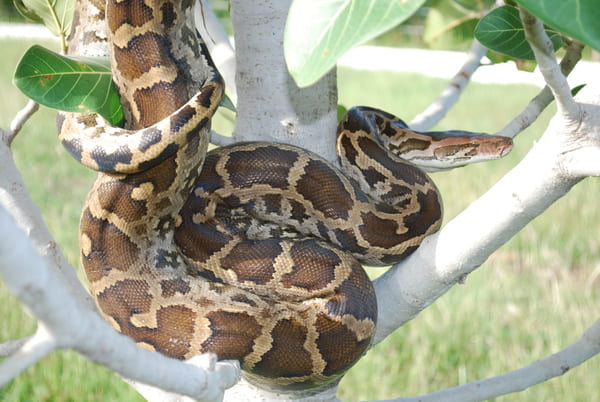
10. Asian Rock Python
The Asian rock python (Python molurus), also known as the Indian python or the black-tailed python, is a non-venomous snake in the family Pythonidae. It is mainly distributed in sub-South Asia and is one of the largest snakes in South Asia. In 2009, the subspecies Burmese python was recognized as a separate species. The average adult Asian rock python can reach 4 meters in length and weigh about 30-60 kilograms or more. Its body girth is unmatched by other snakes. Currently, the longest Indian python recorded is 5.85 meters (recorded by Cooch-Behar, West Bengal, India). The scales of the Indian python are smooth and shiny, the head is relatively flat, and the tip of the nose is wide and turned upward. Its eyes are small, with linear pupils and distinct gold spots on the irises.
animal tags: boa
We created this article in conjunction with AI technology, then made sure it was fact-checked and edited by a Animals Top editor.